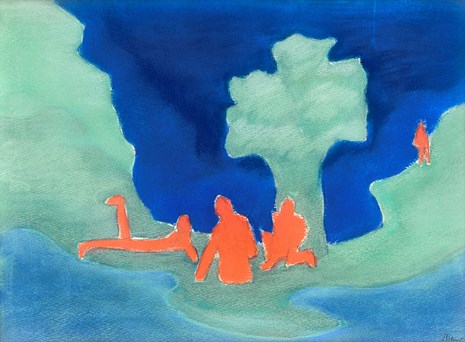Lithuanian cinema and art

Lithuanian cinema and art
Production design is an integral part of the art of film. The production designer is the first person to convert the literary language of the script into a visual one. It is the production designer who creates the "illusion of reality", and sets a certain stylistic direction for the film. In this way, the scenery of the film facilitates the realisation of the director's concept. It can be artificial, created with the help of the visual arts, or natural, with views selected directly from the landscape. Depending on the film's genre and the expressive style of a particular artist, film sketches may be precise depictions of the locations of a film's action, or they can be abstract, conveying only the mood and the style of the film. Usually, their aesthetic qualities are related to general trends in the visual arts of the period. The foundations of Lithuanian production design were laid by artists from different areas who started working in the second half of the 1950s.
This exhibition covers the period in Lithuania from the 1950s to the 1980s, which produced a generation of artists who created an idiosyncratic language of art direction, revealing the individual style of particular artists, in spite of the restrictions imposed by the Soviet authorities. From the very beginning, this generation's specific aesthetic values were influenced by processes of modernisation. Changes in the visual arts, especially in painting, had a direct effect on the work of production designers. The first production designers whose sketches are presented in this exhibition were either architects (Arūnas Žebriūnas [b. 1930] and Algirdas Ničius [b. 1929]), graphic artists (Vytautas Kalinauskas [1929-2001] and Algimantas Švažas [1933-2003]) or painters (Juzefa Čeičytė [b. 1922]) and Jeronimas Čiuplys [1928-99]) and include just one set designer (Filomena Linčiūtė-Vaitiekūnienė [b. 1947]). Of course, since its very birth, Lithuanian cinema has been particularly close to theatre. Both institutions frequently shared the same artists. Most film production designers first worked as stage designers (or they were otherwise associated with the theatre), and switched to cinema later. According to the graphic artist and production designer Vytautas Kalinauskas, "the specific nature of cinema demands many solutions that have nothing in common with theatre, and yet working in theatre and in cinema complement and enrich each other."
Like cinema itself, production design in Lithuania was often developed by people who were not professionals, but that is precisely what makes it unique. Exploring the expressive means used by other art forms together with the film director, the production designer would eventually develop a distinctive understanding of the specifics of the trade. Exhibits from the collection of the Lithuanian Museum of Theatre, Music and Cinema presented in this exhibition demonstrate the increasing emancipation and independence of the language of Lithuanian film production design. Artists gradually distanced themselves from literal depiction on paper, and switched to more abstract ways of conveying the plot.
Curators: Donata Griciutė, Helmutas Šabasevičius


